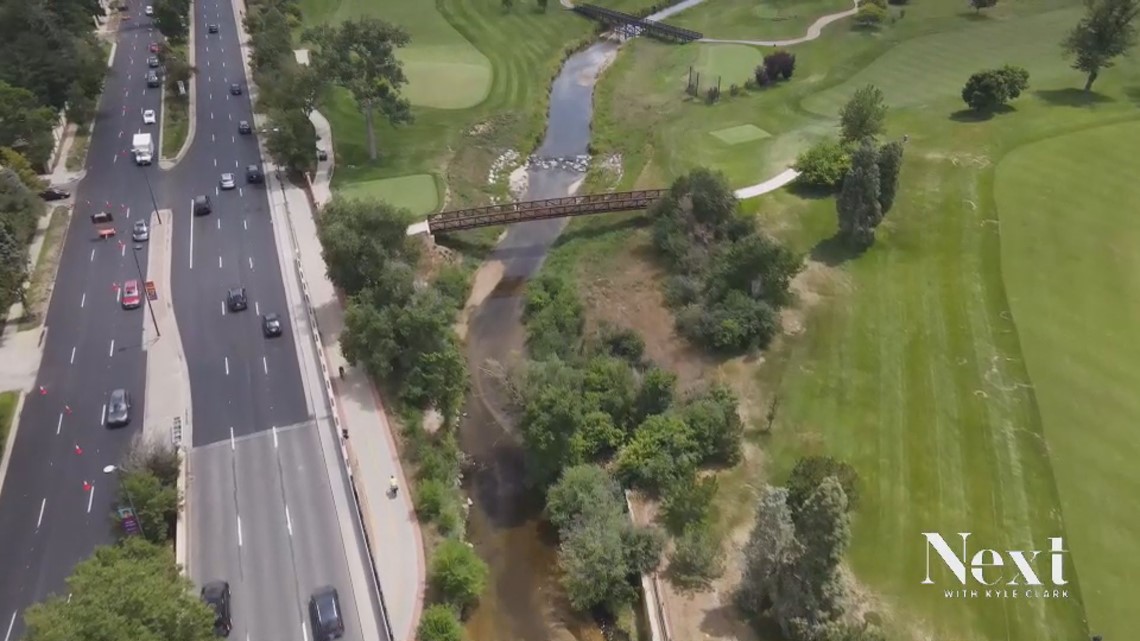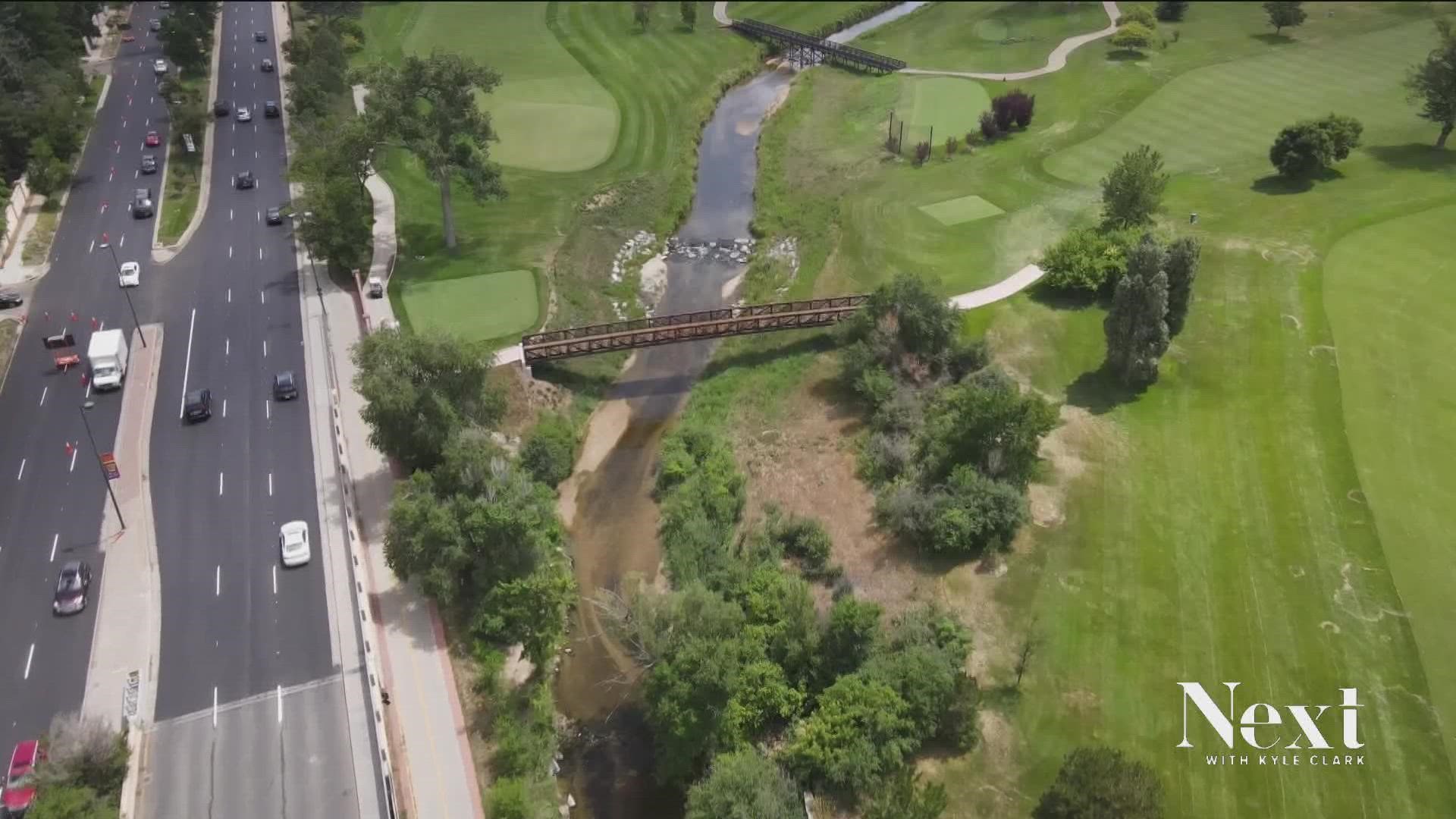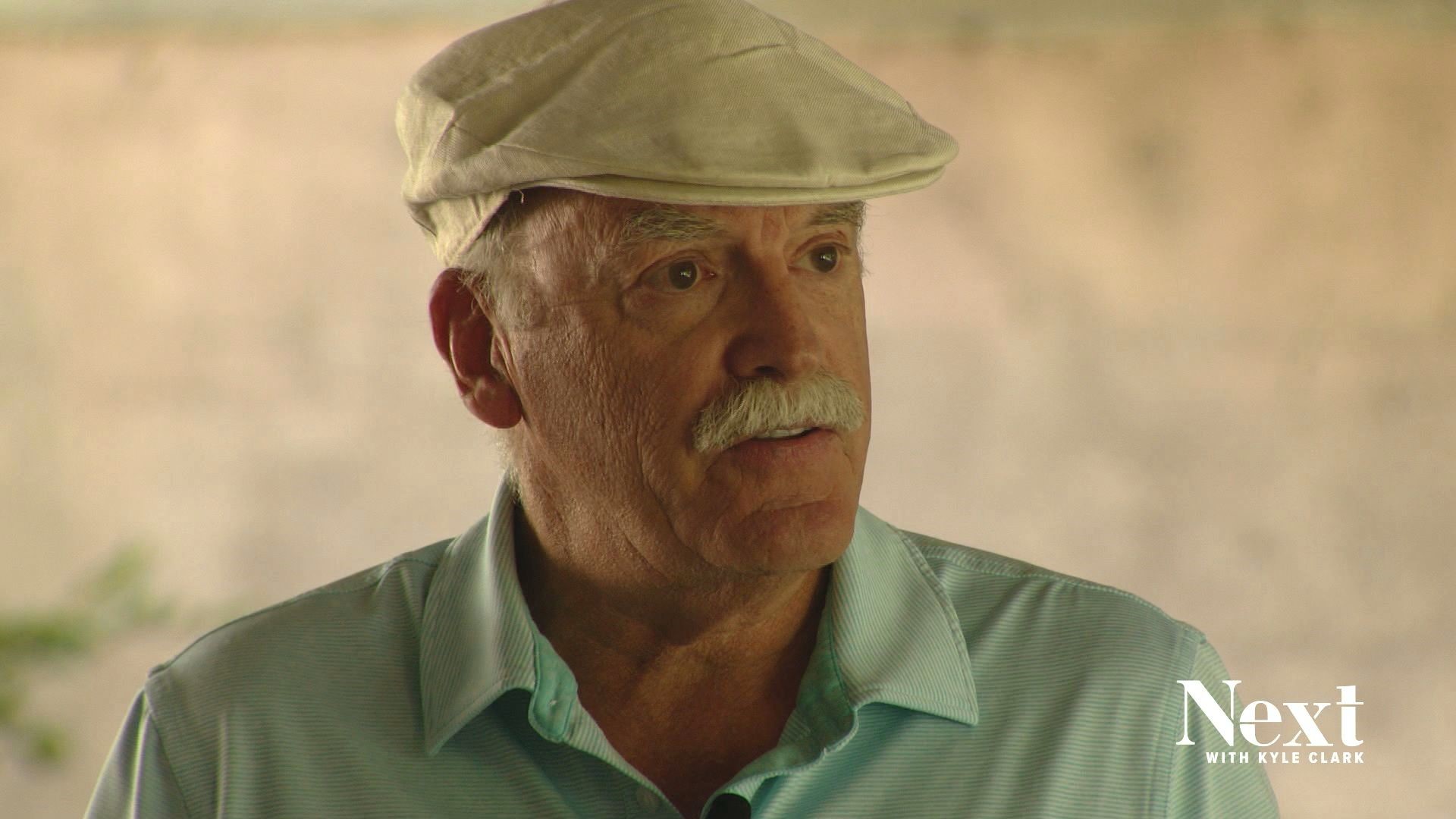DENVER — Cyclists and pedestrians who travel along Denver’s Cherry Creek trail are met with an odd permanent detour near Denver Country Club.
While the bike path travels all along Cherry Creek from the confluence of the Platte River near downtown, the trail diverges from the creek near Downing Street.
This sends riders and joggers to a smaller sidewalk that runs along 1st Avenue next to Denver Country Club. The trail later reconnects with the creek after it clears Denver Country Club property past University Boulevard.
“It’s something I’ve noticed for years and has bothered me,” Denver Post columnist Megan Schrader said.
She tweeted a suggestion last month that the City of Denver consider completing the path along the creek at least part of the way through Denver Country Club.


“In all of the city’s planning documents [The Cherry Creek Trail is] described as an emerald jewel that runs all the way from the city to Franktown,” Schrader said. “It should be on the city’s long-range forecast to make good use of this asset.”
The Denver Country Club was founded in 1922, according to the Denver Public Library’s Western History Collection. The Cherry Creek Trail was designed in the 1970s and constructed years later.
Fred Wolfe drew plans for the path as part of Denver’s bikeway plan in 1972, which included what is currently known as the Cherry Creek Trail through the city. He said going through the country club wasn’t really an option.
“We looked at what our options were,” Wolfe, who is now retired, said. “We’d have to cut the fence, which would have been a security problem for the Denver Country Club and they certainly weren’t going to be in favor of that.”
The man who designed Denver’s ‘bicycle superhighway’
Wolfe was hired by the city in 1971 to be part of a team of planners working specifically on preparing Denver to host the 1976 Olympics. But after a campaign to keep the Games out of Colorado, which Wolfe admits he voted in favor of, he was asked to draw up a bike plan for the city.
“There was a lot of pressure on Mayor [William] McNichols then,” he said. “There were a lot of guys that showed up at his office in the morning who said, ‘Wait a minute. We ride our bike, we’re not polluting. We don’t take up a lot of room. Why don’t you provide facilities for us?’”
Wolfe said he was the only person in the office who commuted to the office each day by bicycle. His boss asked him to work on a project to design a bike plan for the city, something most bigger cities didn’t have at the time. He says after he drafted the plan, other cities reached out to copy Denver’s blueprint for building bicycle infrastructure.
Part of that plan was to build a wide bike path along Cherry Creek, which at the time was overgrown with weeds. He remembers taking a Denver Post columnist on a hike from the area near where REI is now to Downing to show her what he believed the path could be. She wrote about his vision, which later became a reality.
According to Wolfe, the initial plans estimated the trail would cost about $750,000 per mile to build, an estimate Wolfe says the mayor balked at at the time. Years later the trail was built and cost nearly $1 million per mile, he said.
Could Denver build the trail through the Denver Country Club?
Wolfe said the current configuration of the trail, which avoids Denver Country Club, is the best path.
“You would have to provide a fence on both sides of the creek from Downing all the way up to 1st Avenue,” he said. “Which, from an aesthetic standpoint, would really not look good at all in that golf course.”
Schrader said the city should consider a better option for commuters in the next 10 years.
“I don’t want to be unreasonable,” she said. “The Denver County Club for those who are members of this private organization is probably really, really nice. But surely, we can meet some kind of a compromise that’s better than what we have currently.”
The Denver Country Club didn’t respond to a request for comment on this story.


